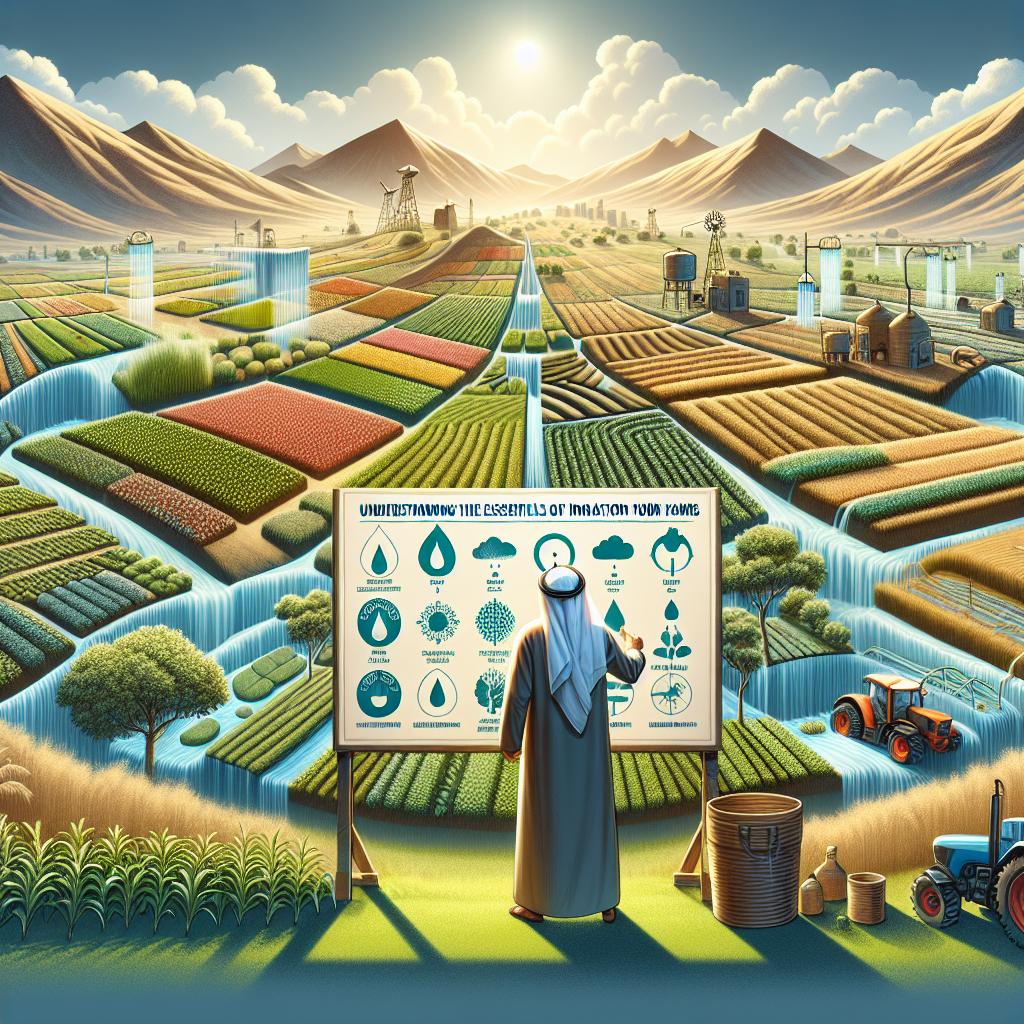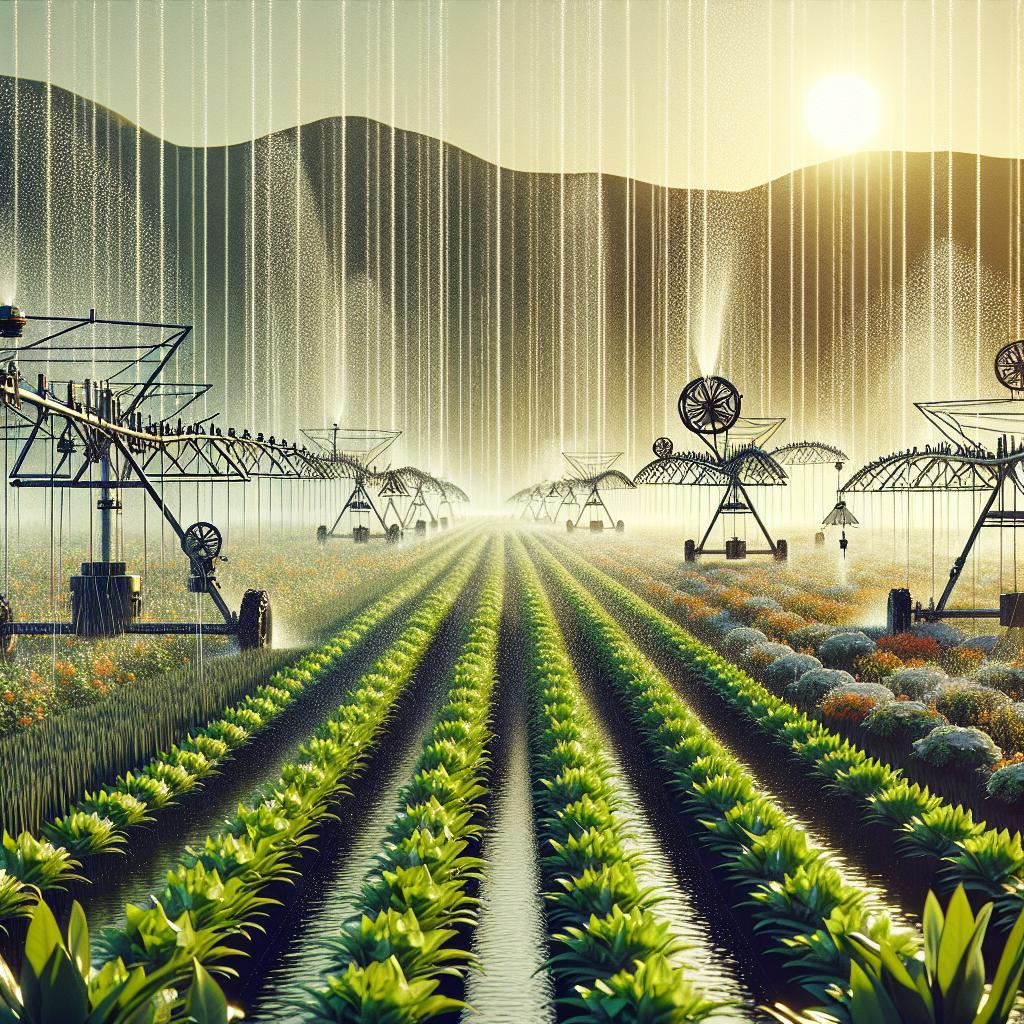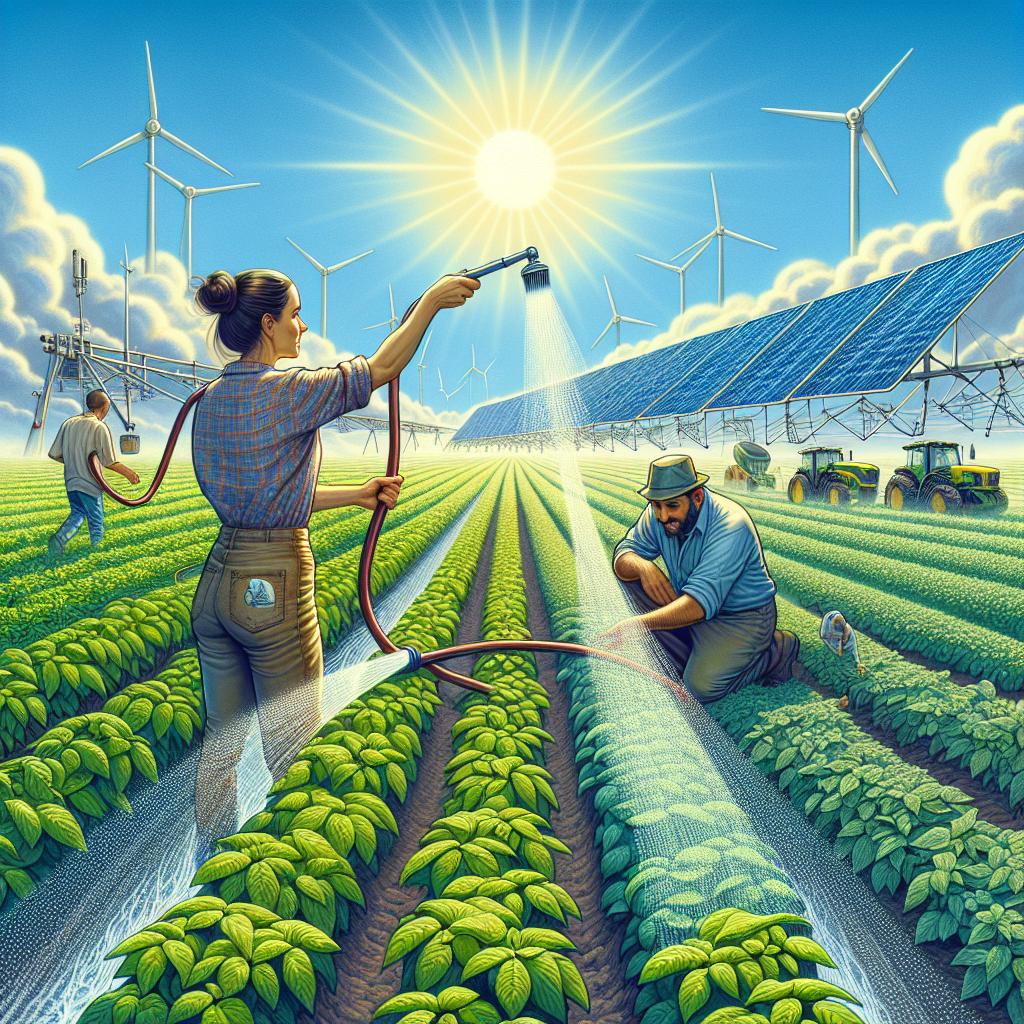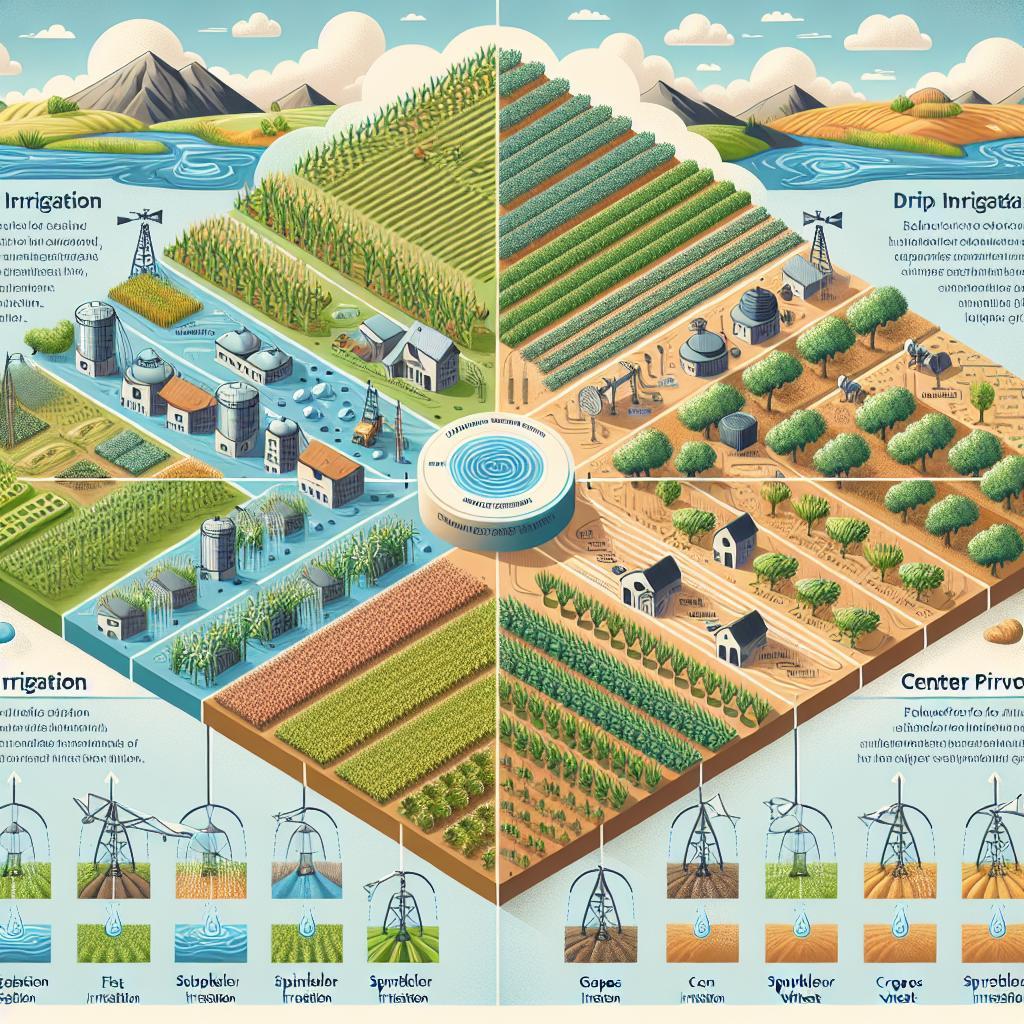This post may contain affiliate links which means I may receive a commission for purchases made through links. Learn more on my Private Policy page.
Introduction:
Imagine standing on your farm, where the sun casts a warm glow over your fields, adn the scent of fresh earth fills the air. As the crops sway gently in the breeze, the life-giving force of water plays a starring role in this idyllic scene. But here’s the million-dollar question: which irrigation system will ensure your plants thrive? Whether you’re nurturing a few backyard beds or managing expansive acres, choosing the right irrigation method can make all the difference in maximizing yield and conserving precious resources.
In this article, we’ll dive into the world of irrigation systems—exploring the merits and quirks of each type, from the classic charm of drip irrigation to the robust capabilities of centre pivots. With a friendly approach, we’ll help you navigate through the options, empowering you to find the perfect fit for your unique farming needs. So grab a mug of coffee, roll up your sleeves, and let’s embark on this journey to discover which irrigation system can transform your farm into a flourishing oasis!
Understanding the Essentials of Irrigation: Tailoring Techniques to Your Farm’s Needs
Effective irrigation is crucial for optimizing crop yields, and understanding the basics can definitely help you select the most suitable approach for your land. Different irrigation systems come with thier unique advantages and capabilities, allowing farmers to customize their watering methods according to specific agricultural needs. for instance, consider the varying characteristics of the following systems:
- Drip Irrigation: Delivers water directly to plant roots, minimizing evaporation and runoff.
- Sprinkler Systems: Mimics rainfall, making it ideal for large fields with varied crops.
- Surface Irrigation: utilizes gravity flow for distributing water,frequently enough employed in flatter terrains.
- Subsurface Irrigation: Places water below the surface to conserve moisture and nutrients.
To determine the best irrigation technique for your farm, it’s essential to analyse factors such as soil type, crop choices, and water availability. The following table illustrates key aspects to consider when comparing irrigation methods:
| System Type | Best Use | Cost |
|---|---|---|
| Drip Irrigation | Fruit Trees,Vegetables | $$ |
| Sprinkler Systems | Cereal Crops,Lawns | $$$ |
| Surface Irrigation | Row Crops | $ |
| Subsurface Irrigation | Perennials,High-Value Crops | $$$$ |

Exploring the Pros and Cons of Surface and Drip Irrigation for Maximum Efficiency
When considering irrigation systems, surface and drip irrigation each have their unique advantages and drawbacks that can substantially influence the efficiency and productivity of your farm. Surface irrigation is frequently enough lauded for being simple and economical. It enables water to flow over the soil’s surface and reach the roots of crops naturally. This method is particularly effective for large, flat fields and can easily accommodate diverse crops. However, it often requires more water than necessary, which can lead to wastage and runoff, and uneven distribution can sometimes present challenges. Plus, if not managed well, surface irrigation can lead to soil erosion and salinity issues.
On the other hand,drip irrigation offers enhanced water efficiency by delivering water directly to plant roots through a system of tubes and emitters.This targeted approach minimizes evaporation and runoff, making it particularly beneficial in arid regions.It allows for precise control over watering schedules and reduces weed growth.Still, drip systems can be more complex to install and maintain, frequently enough requiring a higher initial investment. Key factors to consider when evaluating these systems include:
| Feature | Surface Irrigation | Drip irrigation |
|---|---|---|
| Cost | Lower initial investment | Higher initial costs |
| Water efficiency | Less efficient, prone to runoff | Highly efficient, minimal wastage |
| Labor input | Requires regular monitoring | Requires skilled maintenance |
| Soil impact | Possible erosion issues | Less risk of soil degradation |

Unveiling Advanced Systems: When to Consider Sprinklers and Automatic solutions
When considering the integration of sprinklers and automatic irrigation systems into your farm, it’s crucial to evaluate both the specific needs of your crops and the unique characteristics of your land. Sprinklers are often ideal for larger fields with crops that thrive on regular moisture and can benefit from even water distribution. Their versatility allows for adjustments in radius and pressure, ensuring that every corner of your farm receives the attention it needs. On the other hand, automatic solutions come into play when efficiency and precise timing become paramount. These high-tech systems can reduce water waste by onyl operating when conditions are right, which is especially beneficial in areas facing water constraints.
Before making a decision, you might find it helpful to consider the following factors:
- Crop Type: Different plants have varied water requirements.
- Soil Characteristics: Understand the retention and drainage capabilities.
- Climate: Rainfall patterns and temperature will influence water needs.
- Budget: initial costs versus long-term savings on water bills.
| System Type | Pros | Cons |
|---|---|---|
| Sprinklers | Flexible usage, even water distribution | Can waste water if not monitored |
| Automatic solutions | Water efficiency, customizable settings | Higher initial investment |

Sustainability Matters: Choosing Eco-Friendly Irrigation Practices for the Future of Farming
When considering irrigation systems,sustainability should be at the forefront of every farmer’s mind. Traditional methods like flood irrigation can lead to significant water waste and soil degradation. In contrast, more modern, eco-friendly options offer solutions that conserve water and promote healthier soil. Drip irrigation,for instance,delivers water directly to the roots of plants,minimizing evaporation and runoff.Other options worth exploring include sprinkler systems and subsurface irrigation, each with unique advantages that can be tailored to specific crop needs and local climate conditions.
Choosing the right irrigation system can make a significant difference in both productivity and environmental impact. Here are some key factors to consider when deciding:
- Water Efficiency: Assess how much water your crops actually need versus what each system provides.
- Soil Health: Consider systems that enhance nutrient availability and reduce soil erosion.
- Maintenance requirements: Some systems may require more upkeep,which can affect long-term sustainability.
- Cost-Effectiveness: factor in initial setup costs against potential savings on water bills and crop yields.
| System Type | Efficiency (%) | Ideal Use |
|---|---|---|
| Drip Irrigation | 90 | Vegetables & Fruit Trees |
| Sprinkler System | 75 | Crops with Uniform Spacing |
| Sub-Surface Irrigation | 85 | Row Crops |
In Summary
As we wrap up our journey through the diverse world of irrigation systems, we hope you’ve discovered valuable insights to help you cultivate a thriving farm. Whether you’re leaning towards the efficiency of drip irrigation, the versatility of sprinklers, or the age-old reliability of flood systems, each method has its unique set of advantages suited to different crops, climates, and budgets.
Remember, there’s no one-size-fits-all solution in agriculture. The best choice for your farm will depend on a blend of your specific needs, the nature of your land, and, perhaps most importantly, your personal farming ideology. As you sift through your options, consider the long-term sustainability of your chosen system—not just for your crops, but for the environment we all share.So, step forward with confidence and creativity! Feel free to embrace experimentation; after all, innovation is often born from the willingness to learn and adapt.Happy farming, and may your fields flourish with every drop of water! 🌱💧
This post may contain affiliate links which means I may receive a commission for purchases made through links. Learn more on my Private Policy page.

